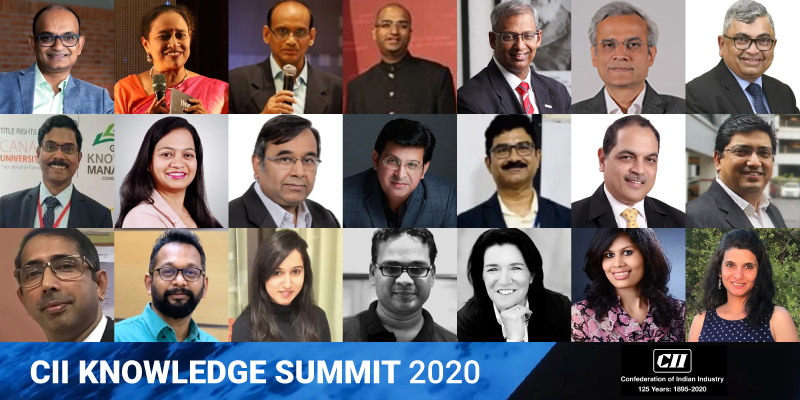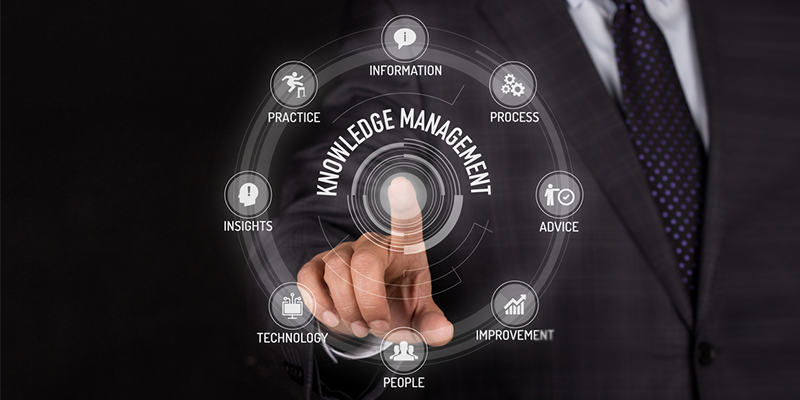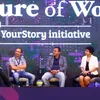Not soon after China revealed the discovery of SARS-CoV-2 in their country, scientists around the world began acting. This was a different type of coronavirus than had been studied since at least 1980.1
One difference is the gain of function potential capabilities the virus is believed to have2 that have been used in lab settings to alter the function of cells “as powerful tools to understand basic bacterial and viral biology and pathogen-host interactions.”3 The U.S. had banned this research in 2014, but in 2017 it was quietly lifted and4
“… the US National Institutes of Health (NIH) announced that they would resume funding gain-of-function experiments involving influenza, Middle East respiratory syndrome coronavirus, and severe acute respiratory syndrome coronavirus [SARS].”
The novel coronavirus appeared to trigger a wide range of symptoms in people. Some had only a mild affliction; others were sick for weeks and still others suffered such serious respiratory debilitation that they required the assistance of a ventilator.5
Your Blood Type May Reveal Risk Profile
After the SARS outbreak of 2003, researchers found that one specific blood type, Type O, had a potential protective effect against that strain of the coronavirus.6 Scientists have also been looking at what genetic factors may impact infection and its severity for people exposed to SARS-CoV-2.
The home-based genetic testing company 23andMe released preliminary results from a study they conducted using the information of more than 750,000 people.7 Their early results suggest that a person’s blood type has an influence on their susceptibility to the virus.
In addition to the information they used from among the millions who have sent their DNA to the company,8 they want to add data from 10,000 hospitalized patients who are not already part of their database.9
The company reported that the percentage who tested positive for COVID-19 by blood type was 4.1% for blood group AB.10 The differences reported in the study showed that those with type O had a 9% or 18% lower potential for testing positive for the virus when compared to those with blood types A, B or AB.11
In a separate study, researchers found that individuals with blood type O Rh positive had the best protection.12 23andMe did not find any differences between the two RH factors, positive or negative.13 It’s important to note that data were collected from self-reported information, which may reduce the validity of this study.14
In an investigation from China, researchers compared the blood types of 2,173 patients who tested positive for SARS-CoV-2.15 The results demonstrated that those with blood type O had a lower risk of infection and those with blood type A had a higher risk. The results of this study are early, and the researchers warn they should be used only as a guide.
A different group of researchers evaluated the health information of people who had respiratory failure; in addition to reviewing the data from a control group, they studied individuals who were patients at seven hospitals in Italy and Spain.16 In the final analysis, 835 people from Italy and 775 people from Spain who tested positive for the virus were included.
The researchers analyzed 8.5 million single-nucleotide polymorphisms, which are genetic variations.17 They found statistically significant genetic differences in blood groups. They also found a higher risk for individuals who have A-positive blood and a lower risk for those with blood type O.
It’s important to remember that the results do not demonstrate there is absolute protection or risk with blood type, only that those with blood type O may have a lower risk and those with blood type A may have a slightly higher risk. The results from Italy and Spain add to a growing body of evidence indicating that blood type has some impact on a person’s susceptibility to the SARS-CoV-2 infection.18
Laura Cooling from the University of Michigan said that the current data don’t match the epidemiology of the disease pattern in the U.S.19 She pointed out that blood type O is more prevalent in the population of African-Americans, who are experiencing a disproportionately higher number of infections.
This suggests that blood type may be less of a risk factor compared to others, such as comorbidities known to increase the risk of severe conditions and disease such as vitamin D deficiency, obesity, diabetes and cardiovascular diseases.20
What’s Important About Blood Type?
Blood type has an impact on emergency care and transfusion; a successful transfusion requires that the person receiving the blood gets the same type from a donor.
Your blood type is determined by the presence or absence of antigens on the surface of every red blood cell. These give your blood specific characteristics, including blood type. The four major types that are determined by two specific antigens, A and B, include A, B, AB and O. Another factor, Rh, may also be present.
The most common blood types are O-positive and A-positive. The approximate distribution of blood types ranges from type O-positive at 38% of the population to type AB-negative at 1% of the population.21
At this time, it’s not understood how blood type may play a role in susceptibility to COVID-19. Professor Andre Franke from the University of Kiel is an author of the study from Italy and Spain.22 He found the gene to type blood is near a gene that controls a protein for a strong immune response.
The overreaction of the immune system, called a cytokine storm, is primarily what causes a massive inflammatory response and lung damage with COVID-19. Theoretically, this genetic variation may have an influence over the immune system and explain the link to blood type.
Consider These Risks Before Taking a Home DNA Test
The number of people using at-home DNA tests to track their ancestry, confirm their heritage or get information on blood type grew through 2019, as demonstrated by the large population that 23andMe used in their study.23,24
Although 23andMe.com saw recent growth, that company, along with Ancestry.com, which also collects your DNA, began losing sales in 2019. However, these tests are not risk-free. They still hold the data on everyone who’s sent them information, however.25 The potential use for DNA ranges from mapping your family tree and helping find genetic indicators to identifying health conditions and solving crimes.
The last two are usually done in highly regulated labs, while DNA to identify your family tree is not. The at-home test kit allows you to check your results online.26 In so doing, you have to give the company permission to store your information in their database. This is the same database 23andMe used to perform the recent comparison of blood type and COVID-19 infection.
Information may also be used in other ways, depending on the rules of the company. With some, your use of their services allows them to sell your genetic data to third parties without your consent and without profit sharing. Pharmaceutical companies, as an example, need large DNA data sets to develop new drugs.
These data are typically sold for millions of dollars, but those who provide the data realize none of the profits.27 That irony is compounded by the fact that consumers have to pay about $99 to get their DNA tested, which then becomes freely available for corporate use and profiteering, among other things, over which the donors have no control.
Your DNA is your most personal set of information, which can be used and manipulated in several ways. In an era when companies have difficulty keeping your usernames and passwords safe, it isn’t unrealistic to think your DNA data may also be at risk.
In 2013 researchers published a paper demonstrating that it was possible to identify people participating in genetic research studies by cross-referencing their data with information freely available on the internet.28,29 Scientists are excited about the potential information that may be gleaned from large DNA databases, but it poses a problem for your privacy.
Direct-to-consumer DNA testing companies are not bound by HIPAA regulations, which means your personal health information is not protected.30 Even if there is no leak, your genetic information may be used by employers, life insurance organizations and health insurance companies. In fact, in 2013, 23andMe admitted that the goal of their company was to collect massive amounts of DNA data to use without donors’ consent.31
Steps to Optimize Your Health and Support Your Immune System
It is helpful to know your blood type, but that is likely not a strong factor in your ability to withstand a viral infection. The number of people who are dying from COVID-19 lies somewhere between the World Health Organization’s estimate of 3.4%32 and a study in Nature Medicine indicating 1.4%.33
With many cases going unreported or untested, many of the mild and asymptomatic cases are likely not included in the figures. This means the death rate would be lower. In a study from Italy’s national health authority, 99% of the deaths in Italy were in people who had underlying medical conditions.34
Of those reported, 48.5% had 3 or more comorbidities.35 This points to the importance of addressing any underlying conditions you may have. It’s important that you work to optimize your health in ways that don’t also result in unwanted side effects or conditions related to taking a drug.
Comorbid conditions with higher rates of death and severity are cardiovascular disease, diabetes, high blood pressure, chronic respiratory diseases and cancer.36 Of the five conditions in this list, four are significantly affected by metabolic dysfunction. The common denominator is insulin resistance, which is triggered by a diet of high amounts of carbohydrates and processed foods.
When your body is insulin resistant it is also not metabolically flexible. As Dr. Sandra Weber, president of the American Association of Clinical Endocrinologists, noted:37
“We know that if you do not have good glucose control, you’re at high risk for infection, including viruses and presumably this one [COVID-19] as well … [improving glucose control] would put you in a situation where you would have better immune function.”
What and when you eat has a strong influence on your ability to beat insulin resistance. Intermittent fasting promotes insulin sensitivity and improves blood sugar management. This strategy helps to resolve Type 2 diabetes, high blood pressure, obesity and other conditions affected by metabolic dysfunction. To read more about how intermittent fasting affects insulin sensitivity, see “Intermittent Fasting Instead of Insulin for Type 2 Diabetes.”
Researchers have also found compelling evidence that maintaining optimal levels of vitamin D helps to lower your risk of severe disease. Since scientists anticipate a second wave of illness in the fall, you have a known “deadline” to raise your vitamin D level to at least 60 ng/mL and up to 80 ng/mL by that time.
Importantly, research published April 28, 2020 showed vitamin D insufficiency is prevalent in severe cases of COVID-19.38 They also found 100% of people under age 75 admitted to the intensive care unit had vitamin D insufficiency. For a more in depth discussion of how your vitamin D level will impact your risk and how to optimize your levels see “Your Vitamin D Level Must Reach 60ng/mL Before the Second Wave.”
So, how do you go about optimizing your vitamin D level? First, you need to find out what your base level is, which is done using a simple blood test. An easy and cost-effective way of doing this is to order GrassrootsHealth’s vitamin D testing kit.
Once you know what your blood level is, you can assess the dose needed to maintain or improve your level. Again, the ideal level you’re looking for is above 40 ng/mL, and ideally between 60 ng/mL and 80 ng/mL (European measurement: 100 nmol/L or, ideally, 150 nmol/L to 200 nmol/L).
Next, you can fine-tune your dosage further by taking into account your baseline vitamin D level. To do that, you can either use the chart below, or use GrassrootsHealth’s Vitamin D*calculator. To convert ng/mL into the European measurement (nmol/L), simply multiply the ng/mL measurement by 2.5.
Along with intermittent fasting and optimizing your vitamin D levels, you’ll find a list of more strategies you can simply incorporate into your daily routine at “Want to Defeat Coronavirus? Address Diabetes and Hypertension.”
Original Source: articles.mercola.com
While many annual conferences have been cancelled or postponed to 2021 due to the COVID-19 crisis, others are being held online.
This year, CII’s annual knowledge summit — scheduled for July 6-8 — is also going online, and is titled CII Global Knowledge Virtual Summit 2020: Knowledge in the Age of Artificial Intelligence.
Earlier editions of the conference were called CII Knowledge Management Summit.

The annual summits promote the harnessing of knowledge and intellectual capital via learning cultures, collaborative ecosystems, and leadership commitment. The awards ceremony for the Most Innovative Knowledge Enterprise (MIKE) will also be held virtually.
See Part I and Part II of YourStory’s articles on the 2019 summit, for insights on digital transformation, knowledge communities, and business impacts from around the world. The conference is also supported by the Knowledge Management Global Network (KMGN), an alliance of KM professional societies from India, Australia, Thailand, Singapore, Hong Kong, Russia, USA, France, South Africa, Israel and Japan.
The knowledge movement continues to gather steam in countries around the world, with particular urgency in the wake of the COVID-19 pandemic to speed up effective knowledge-sharing across sectoral and national boundaries. In this series of preview articles, YourStory presents insights from the speakers and organisers of the CII summit, as well as experts from KMGN.
 Also ReadFrom stories to narratives: how innovation calls for new approaches to inspire and engage peopleBusiness impacts of knowledge sharing
Also ReadFrom stories to narratives: how innovation calls for new approaches to inspire and engage peopleBusiness impacts of knowledge sharing
Effective knowledge management can improve productivity, risk management, and innovation. This can be seen in specific metrics for reduced project effort, increased efficiency, speedier ideation, better employee engagement, and more revenue growth.
“Reuse of design and code components in our application development projects led to direct savings of 5 to 50 percent of total project effort,” explains Ved Prakash, Chief Knowledge Officer of Trianz, in a chat with YourStory. This saving was utilised between additional testing, passing it on to the client and adding to project profitability.
In another example, the establishment of a knowledge base in ticketing systems for application support led to ticket resolution times dropping by 30 to 70 percent. “The team was able to pick up more tickets in the same time period, also leading to increased billing and customer satisfaction,” Ved adds.
As a third example, he cites a ‘Designathon’ that was conducted in the company. “More than 100 ideas were submitted, of which 24 were shortlisted for the next stage. Several of them led to an immediate impact on work being done for the clients, and created new revenue streams,” he explains.
A range of other KM success stories are also shared by Balaji Iyer, Director of Knowledge Management and Enterprise Transformation at Grant Thornton. “When we implemented our firm-wide Digital Workspace, it resulted in a 99 percent increase in employee engagement with the workspace, with employees across levels praising its convenience and efficiency,” he explains.
Grant Thornton’s KM programmes are closely embedded alongside its business processes. “Thanks to these programmes, the firm has won multiple clients netting over millions of dollars. In fact, at one point in time, business areas that were serviced through a formal KM program reported a four percent higher revenue growth than areas that were still adopting KM,” Balaji says.
“The value of a centralised KM function helping identification and opening up of knowledge silos, even if they need to be partially secured, cannot be overemphasised,” he adds. The firm’s KM team does a lot of work for the government and public sector, where information cannot freely travel across the organisation.
“Yet, we are helping them move forward with knowledge sharing. We’re keeping content secured if it truly needs to be, but also we’re integrating it into the larger framework of Canvas, our digital workspace,” Balaji explains. This can help end-users with discovery if they have the right security access.
Knowledge-sharing was a key contributor in Singapore’s development of a test for the COVID-19 antibodies, explains Rajesh Dhillon, President, Knowledge Management Society (KMS), Singapore. KMS has developed a framework for the Knowledge-Ready Organisation (KRO), based on maturity levels along with six parameters: strategy, leadership, culture, process, technology, and impact.
Other KM benefits in the area of content and collaboration were cited by Moria Levy, CEO, ROM Knowledgeware. For example, Phoenix Insurance Israel replaced seven different sources of documentation by one unified source. “This enabled better orientation, better understanding, and higher levels of usage,” she explains.
Teva Pharmaceuticals developed a synchronised ecosystem of 46 commercial websites of the company, for various countries in which it operates. “Every country has its uniqueness better fitting the value proposition to its customers,” Moria says. Effective governance and distribution of information originated in headquarters ensuring smooth flow and synchronisation of all sites.
Jerusalem Municipality’s Social Affairs Division applied KM tools for structuring the debriefing process and embedding a full life-cycle methodology. “This led to less recurring problems, more sharing, and learning one from another’s knowledge and success,” Moria adds.
Another example of effective KM in business conglomerates was cited by Manoj Hariharan, Chief Knowledge Officer at Bosch Engineering and Business Solutions. “An engineer in our home appliances company was looking for research in reducing the noise levels of the washing machine motor. Reviews in Bosch follow a systematic approach called DRBFM – Design Review Based on Failure Modes,” he explains.
The designer found that an automotive company had done the same research for motors used in window-lifters. “The management then set up an agile team with members from both companies to work together, and within a few months they had a breakthrough,” Manoj explains. Such case studies are bound to increase as we enter the era of artificial intelligence (AI) and machine learning (ML), he adds.
Bosch recently redefined its identity as a Leading IoT Company. “This requires our mechanical engineers to take a leap into software technologies. To reskill the workforce and achieve the competitive advantage, we will need KM along with the training departments. In my assessment, KM 3.0 will be all about reskilling on the job,” Manoj predicts.
In addition to productivity, KM can boost innovation as well as retention of expert knowledge, according to Vincent Ribière, Managing Director and Co-founder of the Institute for Knowledge and Innovation Southeast Asia (IKI-SEA), hosted by Bangkok University.
“KM can facilitate knowledge transfer across various generations of employees through communities of practice. KM can help ensure knowledge retention to avoid business discontinuity when experts leave the organisation. Finally, KM can also strengthen an organisation’s innovation capability,” Vincent explained.
A range of experts have covered the knowledge impacts of AI in business, ranging from workflow transformation and data readiness to business models and strategy. For example, see my book reviews of Prediction Machines, A Human's Guide to Machine Intelligence; Machine, Platform, Crowd; The AI Advantage; and Human + Machine.
 Also ReadFive megatrends: how to understand key global shifts and ride them to successTrends in the knowledge movement
Also ReadFive megatrends: how to understand key global shifts and ride them to successTrends in the knowledge movement
A number of speakers identified emerging trends in the field of KM. Most notably, these include the rise of AI, ML, and augmented reality (AR). Workflow redesign, enterprise social networks, and inter-organisational knowledge flows are other trends to watch.
“Artificial Intelligence and Augmented Reality will become much more ubiquitous,” observes Gopichand Katragadda, Chairman, Global Knowledge Summit 2020, and Founder and CEO at Myelin Foundry. AI will play a significant role in the description, curation, maintenance, validation, discoverability, accessibility, and distribution of knowledge. AR will make two- way interactions between experts and field workers, combined with knowledge bases, more intuitive.

“AI and ML will become mainstream in unifying knowledge across the entire spectrum of the organisation, internal and external,” adds Ved Prakash of Trianz. Knowledge-on-demand will acquire new dimensions with contextual ability getting enhanced manifold. “More and more knowledge will be crowd-sourced, just like the open-source movement. Voice assistants will replace the search bar as the primary interface,” he adds.
“In the short to medium term, bundled products that integrate online collaboration spaces, unified communications, and core business processes are emerging as a notable trend,” observes Balaji Iyer of Grant Thornton.
“In the long term, AI-powered KM solutions will make it feasible to harness knowledge at critical handshake points,” he adds. These handshake points appear between humans and bots, between organisations and their gig workers, between core business teams and partner ecosystems.
“These are areas that require a fresh KM approach, as the dynamics and actors in the mix are changing rapidly,” Balaji explains. Unfortunately, most firms do not have a playbook for this as yet.
AI and blockchain are other emerging trends in the world of KM, according to Mohamad Faiz Selamat, Vice President, Knowledge Management Society (Singapore). “As access to knowledge becomes more prevalent, it becomes more difficult to verify information sources and ensure that statements made are proven and substantiated,” he explains.
AI and blockchain can help verify information sources and facts in this regard. “This will be crucial to ensure users are well-informed of information sources so that they will be able to discern its credibility,” he says.
“Another possible emerging trend would be the increased role of KM in transforming public education systems,” Mohamad adds. Home-based online learning can deliver customised education based on prescribed levels and pace. KM can help in areas related to content, curriculum design, and pedagogy.
The rise of enterprise social networks is another trend identified by Refiloe Mabaso, Deputy Chairperson of Knowledge Management South Africa (KMSA). She is also Senior Manager for Information and KM at Air Traffic and Navigation Services, South Africa. Digital workplaces and digital transformation of business will be amplified thanks to reliable and effective web conferencing, she adds.
“While it’s more of a huge gap at the moment, as the gap begins to close it will become a huge trend, and that is in the area of ontology,” explains Arthur Murray, CEO of Applied Knowledge Sciences, in Washington, DC.
Most, if not all, efforts to create multi-platform visual machine-readable ontology editors have failed miserably, he laments. “Once this challenge is cracked, the floodgates will open,” he predicts. An ontology is generally regarded as a machine-readable concept map or graph, with descriptions and links to related objects.

 Also ReadFuture of Work 2020: 5 ways AI is disrupting businesses and creating growth opportunities
Also ReadFuture of Work 2020: 5 ways AI is disrupting businesses and creating growth opportunities
AI and KM will help design new kinds of work processes and roles, adds Moria Levy of ROM Knowledgeware. “Working agile will also bring more and faster value propositions to organisations. Ultimately, knowledge capabilities should be extended for all. Leveraging the public’s attitude to harnessing knowledge and information should become feasible across countries, ages and races,” she urges.
“Leveraging visualisation technologies such as AR/VR along with AI can have a significant impact on knowledge absorption and retention,” says Zeba Khan, Managing Partner, Xenvis Solutions.
“In the coming years as the reliance on AI and ML increases, gamification will play a significant role in balancing out the human element in the overall business processes,” adds Rajib Chowdhury, Founder of The Gamification Company.
“With the rise of AI and the new ISO Knowledge Management Standard, it looks like KM is going to gain even more interest from organisations,” Vincent Ribière of IKI-SEA sums up.
(Edited by Saheli Sen Gupta)
Want to make your startup journey smooth? YS Education brings a comprehensive Funding Course, where you also get a chance to pitch your business plan to top investors. Click here to know more.
Original Source: yourstory.com